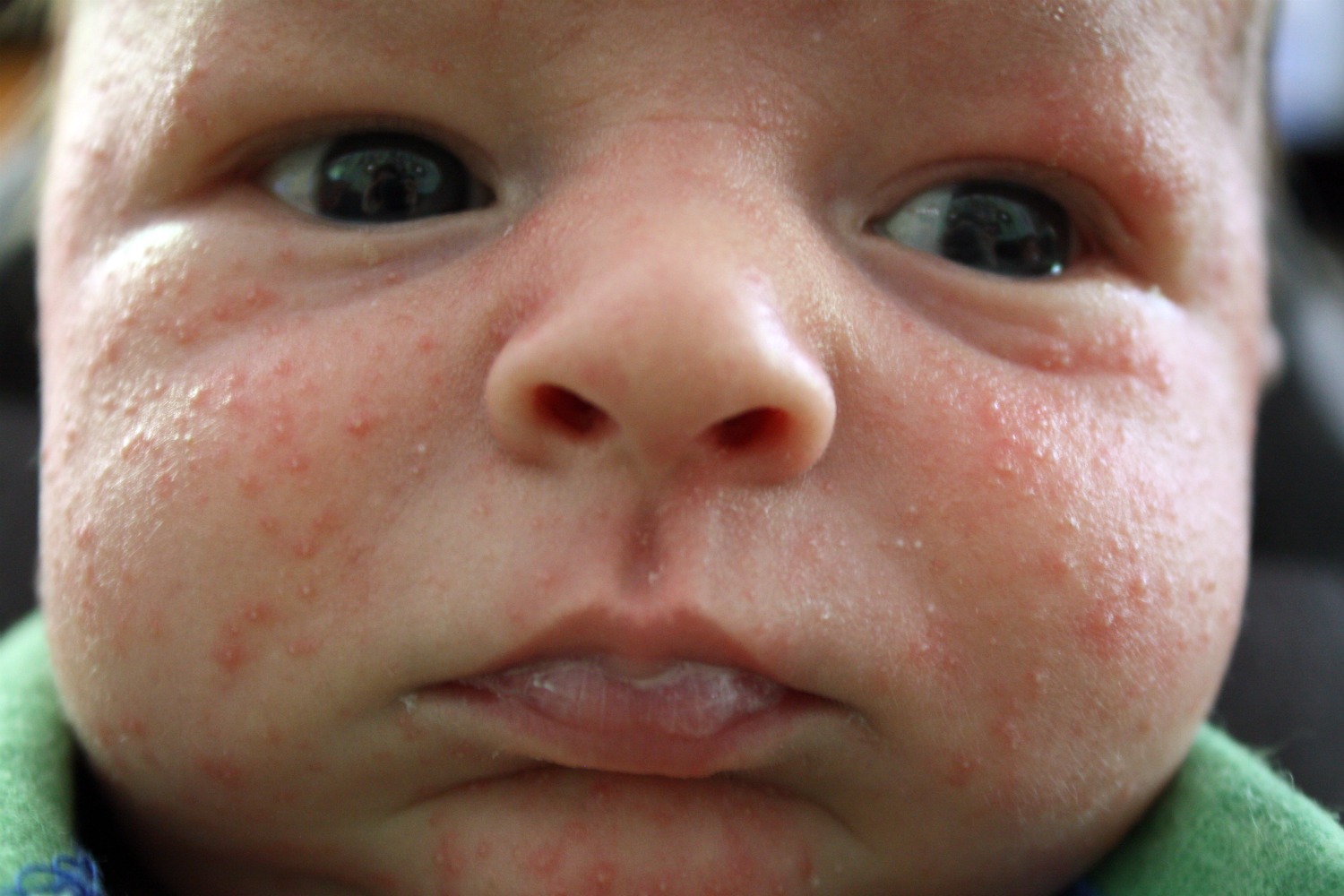
They can last for weeks or even months on baby's skin. This rash should not cause the baby any discomfort. Causes for baby acne might be next. This pimply preview of puberty is incredibly common, usually beginning at 2 to 3 weeks of age and affecting about 40 percent of all newborns. Fortunately it’s temporary, and it doesn’t bother your baby a bit.
Here’s what to do in the meantime. Kathyrn Bowling’s son Gus was only two weeks old when she first noticed red bumps spreading on his face didn’t seem too bad.” Your newborn is picture-perfect, of course—but as you memorize every square inch of her, you may notice some blemishes on her otherwise brand-new skin.
What gives? It’s not as if she’s been chowing down on fast food. They may be red and raised, they may be tiny and white or they may resemble the acne flare-ups you experienced in high school. But while these bumps may be disconcerting, they’re actually not surprising, when you think about it: Just like a teenager, a baby experiences profound hormonal shifts as she adjusts to the world outside the womb, and that can manifest as baby acne.
Here’s how to recognize baby acne and how to treat it when it pops up. Pink pimples ("neonatal acne") are often caused by exposure in the womb to maternal hormones. No treatment is needed, just time. They can last for weeks or even months on baby's skin. This rash should not cause the baby any discomfort.
Causes for baby acne have not been identified even though it’s a common skin condition. Baby acne is defined as tiny red bumps or pimples that develop on your baby’s face or body. Typically, the acne will resolve on its own, even without treatment. This condition should not be confused with milia, which are tiny white bumps on your baby’s face or body.
Typically, the acne will resolve on its own, even without treatment. This condition should not be confused with milia, which are tiny white bumps on your baby’s face, as milia is not related to baby acne. Infants are prone to skin eruptions. Tiny whiteheads (called milia) are caused by the leftover maternal hormones that overactivate the oil-producing glands and plug them up.
A more inflamed version of milia—baby acne—is brought on by the same thing. Both frequently pop up